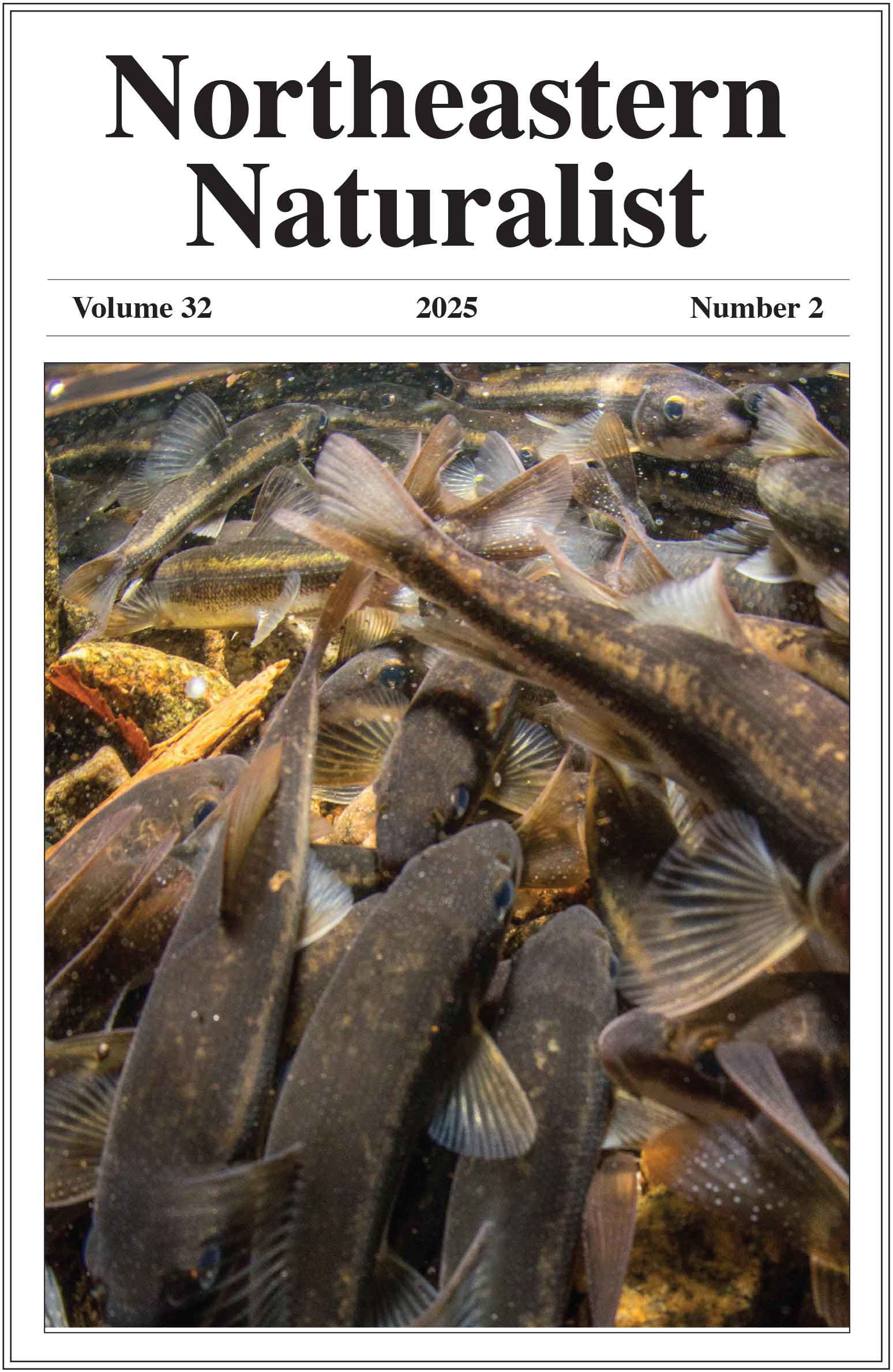A Comparison of Zooplankton Diel Vertical Distribution During Transparent and Turbid Conditions in a Natural Southern Appalachian Montane Lake
Sandra L. Cooke*
*One University Parkway, Department of Biology, High Point University, High Point, NC 27268-3598.
Northeastern Naturalist, Volume 26, Issue 4 (2019): 785–806
Abstract
According to the transparency-regulator hypothesis (TRH), water transparency is the main driver of zooplankton diel vertical migration (DVM) because it influences ultraviolet radiation (UV) exposure and visual predation, which vary greatly over a diel period. I tested the TRH by examining zooplankton DVM and Secchi depth over 2 summers in Mountain Lake, VA, a unique natural lake where transparency and water level fluctuate substantially. Daytime mean depth and Secchi depth were positively correlated for Daphnia parvula, but this was not the case for other taxa. Zooplankton exhibited diurnal deficits (DDs; higher night densities compared to day), indicating that DVM does not account for all diel movement. DDs are sometimes attributed to light-mediated sampler avoidance or diel horizontal migration (DHM), but DDs did not increase with Secchi depth and DDs in littoral zones do not indicate DHM. Overall, these results suggest that factors other than transparency—perhaps predator densities—more strongly influence DVM in Mountain Lake.
![]() Download Full-text pdf (Accessible only to subscribers. To subscribe click here.)
Download Full-text pdf (Accessible only to subscribers. To subscribe click here.)
Access Journal Content
Open access browsing of table of contents and abstract pages. Full text pdfs available for download for subscribers.
Issue-in-Progress: Vol. 32 (3) ... early view
Check out NENA's latest monograph and Special Issue:













 The Northeastern Naturalist is a peer-reviewed journal that covers all aspects of natural history within northeastern North America. We welcome research articles, summary review papers, and observational notes.
The Northeastern Naturalist is a peer-reviewed journal that covers all aspects of natural history within northeastern North America. We welcome research articles, summary review papers, and observational notes.